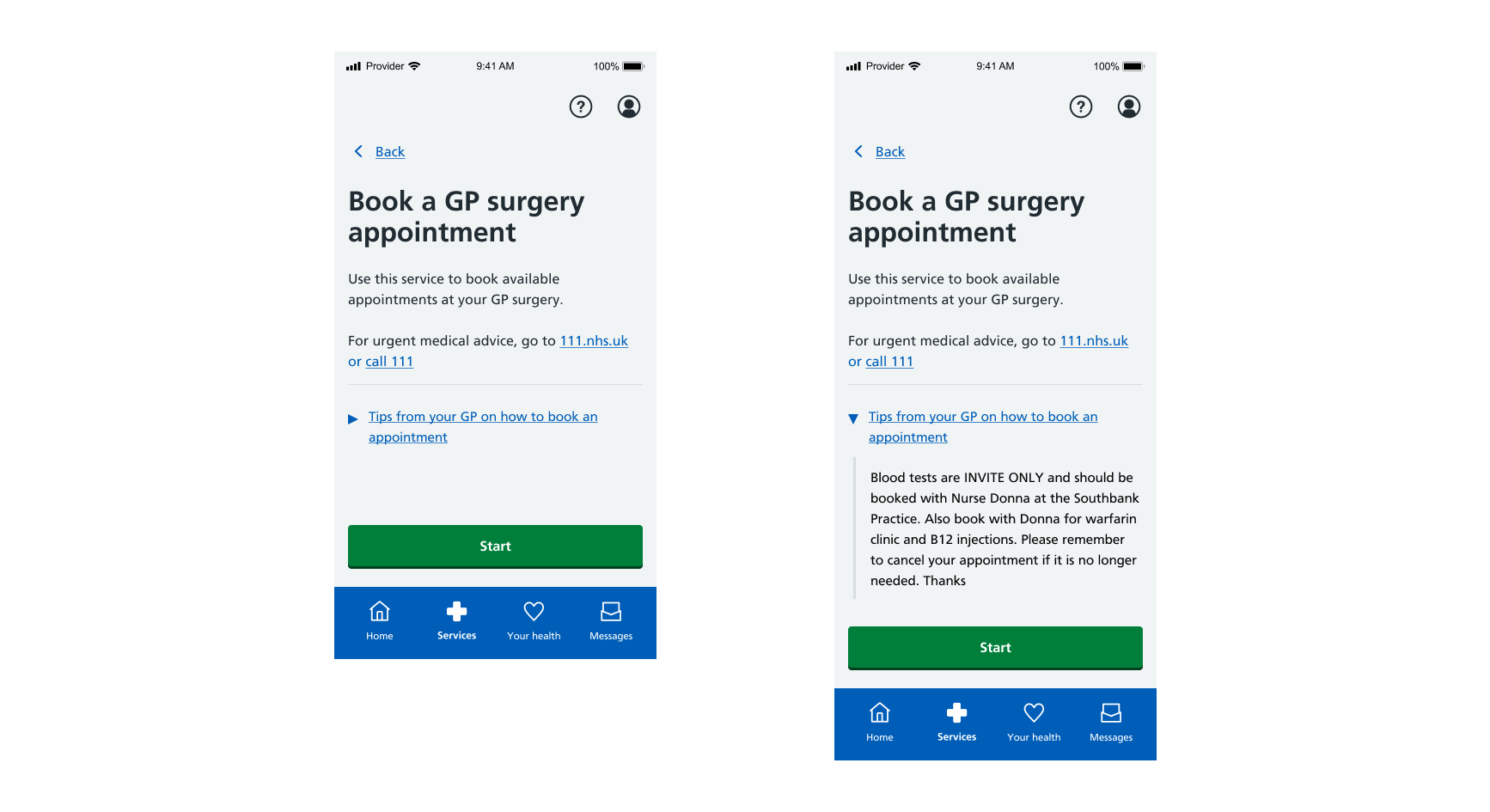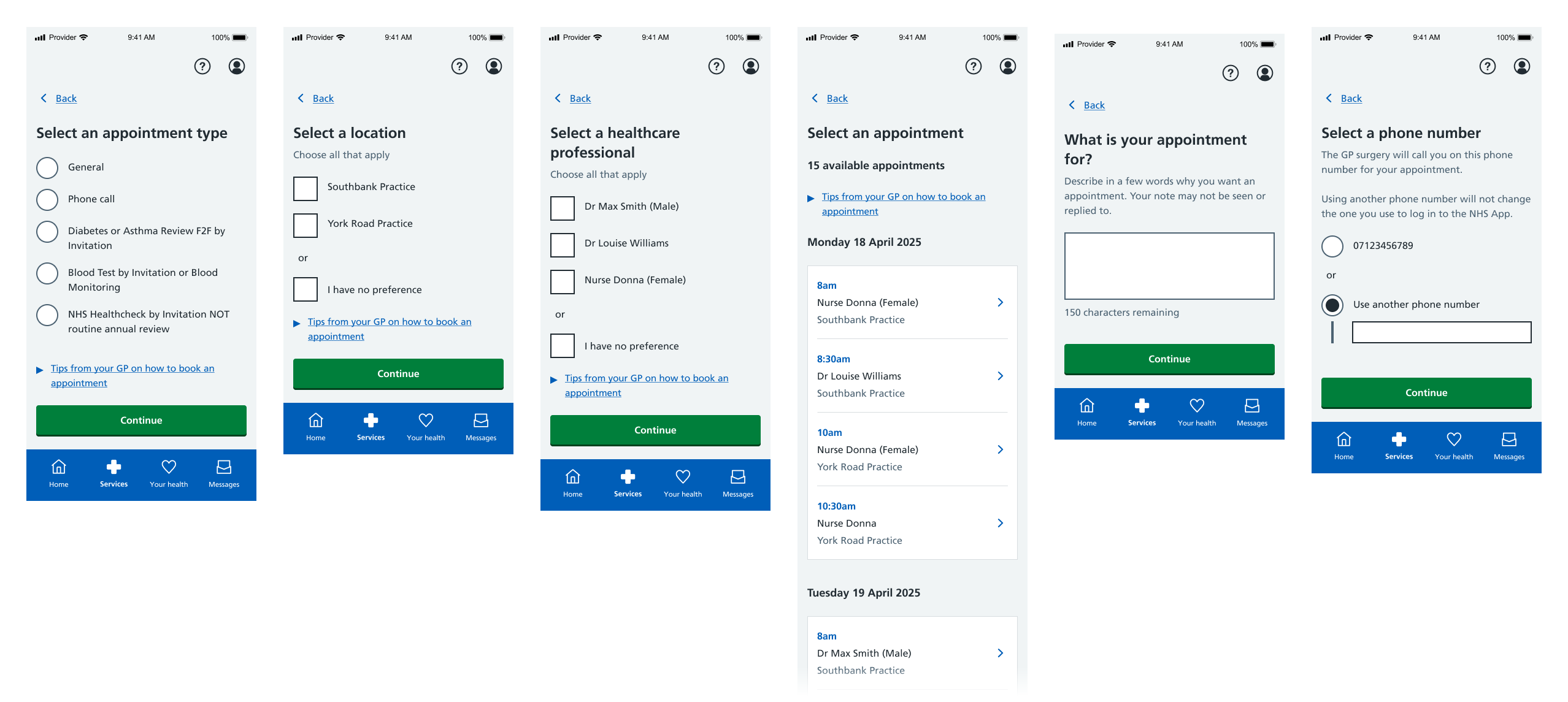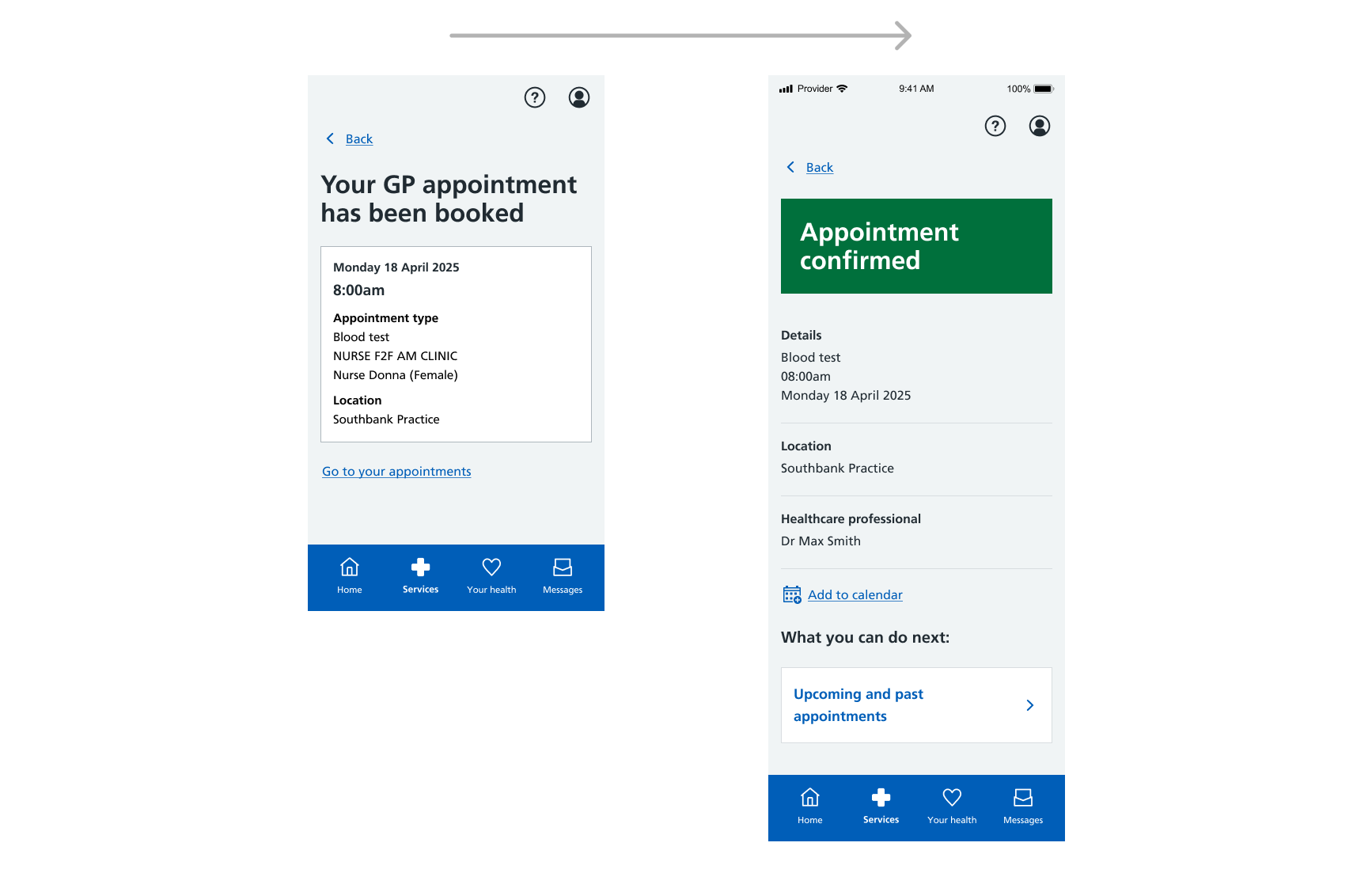GP appointment booking updates
Context
Patients have been able to book GP appointments directly in the NHS app for six years. They can also view and cancel these appointments through the app.
The problem
The GP appointment booking service in the NHS App hasn’t been revised since its release. During this time there have been many changes to the NHS Service Manual. We need to apply these changes changes to GP Appointment Booking functionality to maintain its usability and accessibility.
User research and feedback have shown that users find the booking process long and confusing. This results in unnecessary calls from users to their GP practice as they look for other ways to book an appointment.

Scope of work
We set out to improve the usability and accessibility of the GP appointment booking journey from an interaction and content design perspective. The scope of this work did not include any service level changes, although it could inform further service level issues that need to be addressed.
As-is usability testing
Through several rounds of usability testing on the user journey with 85 participants from a variety of backgrounds, we identified that:
- when booking appointments, users are sensitive to any friction and will easily give up and call their GP surgery
- users would like the option to edit or reschedule appointments rather than just cancel
- users find several drop-downs and expanders in one page overwhelming, when trying to book an appointment
The most common user needs that we uncovered through user research are:
- as a user, I need a clear and understandable GP booking journey, so that I can complete a booking with minimal effort or help
- as a user, I need to be certain that I have confirmed my GP appointment booking so that I can be reassured via proof of booking
- as a user, I need to be able to choose an appointment time that suits me, so that I can comfortably attend
The findings and user needs helped us define our objectives for improving the usability of the GP appointment booking service:
- Investigate how we can make GP appointment booking within the NHS App more accessible for users
- Understand how we can make the experience of booking a GP appointment via the NHS App simpler and less overwhelming for users
- Meet the latest NHS and GDS service standards throughout the booking, cancelling and viewing GP appointment journeys
Design iteration and user testing
We followed an iterative design and user testing process to meet our objectives and user needs. Across 15 rounds of research with 438 users, including specific accessibility testing with users with visual and physical needs, we made a series of significant changes to the user journey.
Summary of changes:
- the journey was split into a series of individual steps, transitioning the experience into more of an appointment booking form. Users found this much easier to progress through and successfully book an appointment, as they could focus on one question per page
- the addition of a start page to introduce users to the service, set expectations and convey key guidance, such as the ‘Tips from your GP on how to book an appointment’
- replacing less useable components like drop-downs with more usable components like checkboxes and radio buttons
- better positioning and functionality of booking guidance throughout the journey
- removal of appointment session name from appointment cards due to widespread use of internal GP jargon used for this data field which can confuse users
- more robust ‘check your appointment details’ pattern before confirmation making it easier to change selections and reduce the number of unintentional pre-confirmation journey exits
- content improvements to help users better understand and navigate the booking experience
- more usable appointment viewing and cancellation journeys to match the improved booking journey
- improved error screen layouts and content in line with updates to the error screen design standards
To validate the changes we made further, we visited 10 GP surgeries across the country to demonstrate the new version. GP surgeries are a big stakeholder in this part of the NHS App, and it was important to get their point of view.
Detailing the major changes
Start page
Most NHS and government services lead with a Start page pattern. We added a start page to the user journey to convey the service name, set expectations and display important information to help the user understand if this service is right for them. In the NHS App, some users can book via this service and others can use ‘Contact your GP about a health problem’. A start page can help users differentiate and pause for a second before continuing with their journey, knowing whether they are in the right place.
The start page was also essential in displaying tips from their GP on how to book an appointment.

Step by step filtering questions
The original design, cluttered with multiple drop-down menus, was overwhelming and particularly problematic for users with accessibility needs. It was unclear how the selections would alter the available appointments displayed, which dynamically updated at the bottom of the screen, causing many issues for screen reader users.
Following the well-established government design pattern for one thing per page, we redesigned the journey into a series of steps where users make their selections for appointment type, location and healthcare professional before being shown a list of available appointments which correspond to their selections. This makes the experience much simpler for users and enabled us to better implement the filtering behaviour that each selection has on the step(s) that follow.

‘Check your answers’ page
Through research and analytics, we noticed that some patients were leaving the app before confirming their appointment. To reduce this, we improved the ‘check your appointment details’ page which now gives patients a clear summary of their selections to check before confirming. It also enables users to change their selections before confirming their appointment

Appointment confirmation page
The existing ‘Appointment confirmed’ page did not clearly communicate to the user that they’d successfully booked an appointment. We found in user testing that implementing the banner component greatly improved this. The new design clearly communicates successful booking to the user and presents their appointment details in an improved format. A clearer ‘add to calendar’ CTA and navigation options allows users to check their upcoming appointments have been added.

Design assurance
We reviewed our new designs with content, service and interaction design leads to ensure quality and consistency.
Throughout the design change process, we worked closely with clinicians to ensure the new designs did not pose a clinical risk and secured final clinical approval.
In conclusion, the NHS App’s GP appointment booking journey has been significantly uplifted, promising a more intuitive, accessible, and satisfying experience for all users of the NHS App.
Final design
